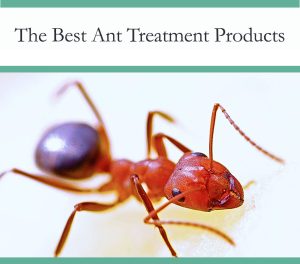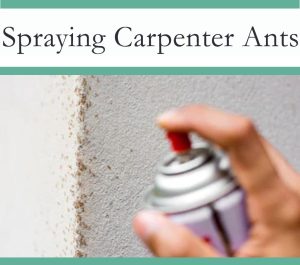How to Get Rid of Leafcutter Ants
Atta species
Facts, Identification & Control
Leafcutter ants are one of the most fascinating ant species on earth. They get their name from their habit of cutting leaves up into small pieces and carrying them back to the nest. They use these leaves to grow a special type of fungus which they feed to their young. The fungus and the ants are completely dependent upon each other, making these ants the first creatures to start farming – millions of years before humans ever existed.
As fascinating as these ants are, they can cause problems for agriculture by stripping trees of leaves. Native throughout Central and South America, leaf cutter ants can also be found in some southern states. Atta mexicana is found in Arizona while Atta texana is found in Texas and Louisiana.
Leaf cutter ants have the most complex societies of any creatures other than humans. Colonies are divided into four separate castes of worker ants besides the reproductive queen. There are minims, minors, media, and major/soldier. Minims are around 3/64 of an inch (1 mm) long. Minors are 1/16 of an inch (1.5 to 2.5 mm) in length. Media a 1/8 to 3/8 of an inch (3 to 9 mm), and majors are 3/8 to 1/2 inch ( 10 to 12 mm). Queens are much larger, up to 5/8 of an inch to 1 inch long (17 to 24 mm).
Generally, leaf cutter ants are brown, ranging from a kind of reddish rust brown to dark brown.



Identification & Characteristics
- Other Names: parasol ants, Texas leaf cutter antss, fungus-growing ants, cut ants, town ant, night ant
- Odor: none
- Color: rust brown to dark brown
- Size: 3/64 “ to 1”
- Legs: 6
- Antennae: yes, 11 segmented with no clubbed end
- Shape: 3 distinct body segments with three pairs of spines on the thorax. Very long legs.

Habitat
Leaf cutter ants nest only in loose soil. They prefer well-drained, sandy soil where possible. Nests often have a southern exposure and are near creeks and rivers or other water sources. Leaf cutter ant mounds can be very large, covering up to 4500 ft.²and extending up to 20 feet in depth. Nest openings are located in mounds of excavated soil that can be up to two feet high. Mature leaf cutter ant nests can have hundreds of these mounds and may contain over one million ants.
Leaves are the ant’s predominant food source, but they have also been known to eat other things such as corn, cornmeal, flour, rice, peas, wheat, and oats. Foragers will travel up to 600 feet from the nest, and sometimes come inside homes in the search for food. However, they can’t survive for long indoors and usually soon leave.

Behavior
Leafcutter ants harvest both leaves and grasses, and some species can strip an entire citrus tree of all its leaves in less than 24 hours. The larger ants first cut the leaves into smaller parts, then small ants cut them even smaller, until the tiniest ants make the leaves into a kind of pulp to grow the fungus. Seeing these ants carrying leaves back to the nest is a remarkable sight, though not a welcome one for gardeners.
The ants are typically active when the temperature is between 45 to 90°F. During the hottest part of the day, they often stay inside the nest and block up the holes to retain moisture. In the summer, like other ant species, they often forage at night to avoid the heat of the day.
Leafcutter ants not dangerous but they are capable of biting. In fact, their jaws are strong enough to draw blood, especially in the case of the largest soldier ants. Typically, leafcutter ants don’t bite unless provoked.

Reproduction
Leafcutter ants are monogynous, meaning they only have a single queen. Normally, the queen is the only reproductive member of the colony, with millions of sterile ants making up the rest of the nest. However, in a mature colony, the queen will produce winged reproductive ants.
Winged reproductives emerge from the nest to take part in a nuptial flight. These typically happen between April to June on clear moonless nights. The swarming ants mate in the air, and the males die soon afterward. The females fly away to start a new nest somewhere else. Queens can fly up to six miles away from their original nest. They also carry with them some of the fungus from their original nest so they can start a new colony where they land.

Danger?
Leafcutter ants are not a health hazard and are not known to carry diseases. Typically, they do not nest indoors. The main danger comes from the possibility of being bitten by the ants if they feel threatened. That, and the damage they can do to plants.

Signs of an Leafcutter Ant Infestation
The common name of parasol ant comes from the species’ habit of carrying large pieces of leaves above them like a parasol as they head back to the nest. This behavior makes a trail of these ants very noticeable. Often, this is the first sign of an infestation.
You may also find leaf cutter ant mounds on or near your property. Leafcutter ant nests are very large, and the mounds can be up to two feet high or more. A mature colony is difficult to miss.
Swarming ants are also attracted to light. If you find large numbers of winged reproductives near outdoor lights, it’s a good sign there is a mature colony nearby.

Controlling Leafcutter Ants
Because leafcutter ants depend on plants and the fungus that feeds on them for their nutrition, there are no ant baits that will work on the species. Instead of ant baits, the best method of control is to treat nests directly and also spray your home with a pesticide spray.
Recommended Product: Conquer
Outdoor Control
Leafcutter ants make obvious trails that appear as areas stripped bare of grass. Also, the many mounds and large size of leafcutter ant nests make areas of ant activity easy to spot.
Once you’ve found the nest, the best method of control is to thoroughly drench it with a pesticide such as Conquer or Demand.
Spray Plants
A repellent insecticide such as Demon Max can be sprayed on outdoor plants to keep leafcutter ants away. Several applications during the summer will probably be necessary.
Spray Outdoor Perimeter
Spraying the outdoor perimeter of your home can help to keep any leafcutter foragers from coming inside. Choose a pesticide with a long-lasting residual such as Suspend. Spray three feet of the wall and three to six feet out from the foundation of the house to create a barrier that will kill any ants that try to cross it.

Best Products to Get Rid of Leafcutter Ants
Inside the House:
Inside the House:
If you find leafcutter ants inside the house, the most likely explanation is that a few foragers have got inside. Leafcutter ants don’t nest indoors, and they need vegetation to survive. They require underground nests where they can buid a thriving fungus garden, and ornamental plants in your house won’t be enough to sustain them. Any ant you find indoors can be killed with a household bug spray. The best strategy is to prevent ants from coming inside with an exterior perimeter spray.
Ant Bait Stations:
Because they are attracted to vegetation, there are no bait stations currently on the market that are effective for leafcutter ants.
Best Products for Outside the House:
Outside the house, the best course of action is to drench any nests you find with a pesticide. Remember that nests can be up to 20 feet deep, so make sure you apply enough pesticide to saturate the soil. Multiple applications may be necessary to make sure you have reached the queen and her brood.
Many of the same products you can use to kill a nest also work to create a repellent barrier around your home. You can use these sprays to saturate a nest and spray the exterior of your home to make sure no leafcutter ants get inside.
For more information on the best way to use pesticides to get rid of ants, check out our ant kits.
Recommended Ant Sprays:

Preventing Infestations
- Inspect your property for any ant mounds. Also, keep an eye out for foraging trails the ants create and any damage to leafy plants.
- If you find mounds forming, saturate them with pesticide. The sooner you treat a mound, the greater your chances of successfully destroying it.
- Seal up cracks and crevices in the exterior of your home with weatherproof silicone caulking. Pay special attention to where pipes and wires enter the house and cracks in the foundations.
- Spray the perimeter of your home with a residual insecticide to stop foraging workers from coming inside.
- Spray leafy plants with a residual insecticide to kill foraging ants when they try to harvest the leaves.

Resources
- https://www.doyourownpestcontrol.com/leafcutter.htm
- https://www.mcgill.ca/oss/article/did-you-know/did-you-know-leafcutter-ants-are-farmers-who-grow-fungi
- https://en.wikipedia.org/wiki/Leafcutter_ant




